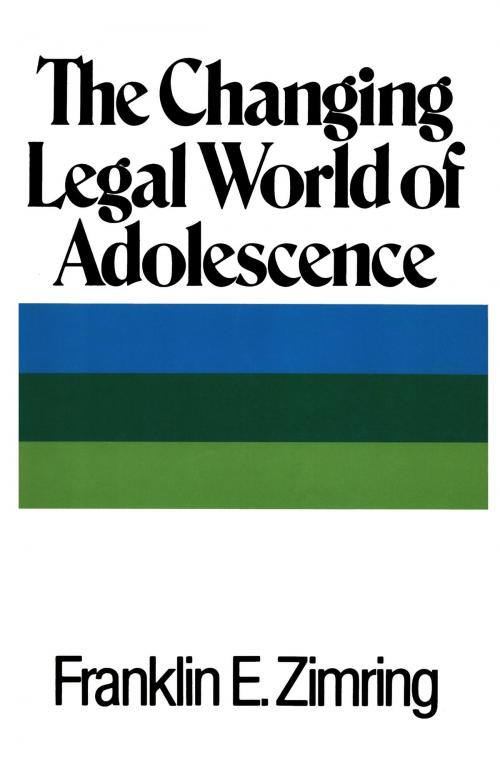The Changing Legal World of Adolescence
Nonfiction, Reference & Language, Law, Child Advocacy, Social & Cultural Studies, Social Science, Crimes & Criminals, Criminology| Author: | Franklin E. Zimring | ISBN: | 9781610272186 |
| Publisher: | Quid Pro, LLC | Publication: | December 19, 2013 |
| Imprint: | Smashwords Edition | Language: | English |
| Author: | Franklin E. Zimring |
| ISBN: | 9781610272186 |
| Publisher: | Quid Pro, LLC |
| Publication: | December 19, 2013 |
| Imprint: | Smashwords Edition |
| Language: | English |
This work attempts to explain changes in the legal conception of adolescence as a stage of life and as a transition to adulthood. The intended audience includes lawyers and others—such as parents, professionals, and kids—puzzled by trends labeled "children's liberation" and "the revolution in juvenile justice." Much cited and long recognized as an authority, it is considered a classic of law & society.
Changes in legal conceptions of youth are interesting in their own right. They are also a useful way of examining important social, political, and economic changes. It is said that legal studies, "properly pursued, lead to a fuller understanding of the larger world of which the law and its institutions are a part." That is no less true when looking at "children" and "juveniles" through a legal lens.
The law often compartmentalizes underage persons with bright lines and legal fictions such as "parens patriae" to allow leeway for them that would not be tolerable for adults. The law creates huge divides based on status and age. The standards against which to judge the exit from adolescence are concrete and measurable: a single chronological age. And an adult is anyone the state legislature says is adult.
But life is not that simple, and the price we pay for sustaining such illusions is considerable. Adolescence is both a period in itself and a transition. This book takes seriously that status and the idea of transition, and attempts to explain the legal responses and concepts relevant to this important stage of life.
The 2014 digital edition includes a new preface by the author and such quality formatting features as active Contents, linked chapter notes, original tables from the print edition, and a fully-linked and paginated Index, to allow continuity with the print edition, citation and referencing, and the convenience of readers.
This work attempts to explain changes in the legal conception of adolescence as a stage of life and as a transition to adulthood. The intended audience includes lawyers and others—such as parents, professionals, and kids—puzzled by trends labeled "children's liberation" and "the revolution in juvenile justice." Much cited and long recognized as an authority, it is considered a classic of law & society.
Changes in legal conceptions of youth are interesting in their own right. They are also a useful way of examining important social, political, and economic changes. It is said that legal studies, "properly pursued, lead to a fuller understanding of the larger world of which the law and its institutions are a part." That is no less true when looking at "children" and "juveniles" through a legal lens.
The law often compartmentalizes underage persons with bright lines and legal fictions such as "parens patriae" to allow leeway for them that would not be tolerable for adults. The law creates huge divides based on status and age. The standards against which to judge the exit from adolescence are concrete and measurable: a single chronological age. And an adult is anyone the state legislature says is adult.
But life is not that simple, and the price we pay for sustaining such illusions is considerable. Adolescence is both a period in itself and a transition. This book takes seriously that status and the idea of transition, and attempts to explain the legal responses and concepts relevant to this important stage of life.
The 2014 digital edition includes a new preface by the author and such quality formatting features as active Contents, linked chapter notes, original tables from the print edition, and a fully-linked and paginated Index, to allow continuity with the print edition, citation and referencing, and the convenience of readers.















